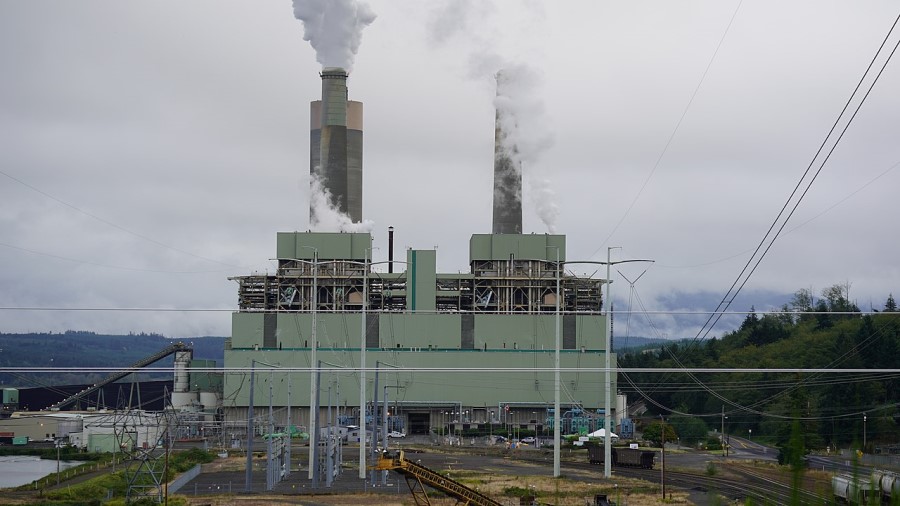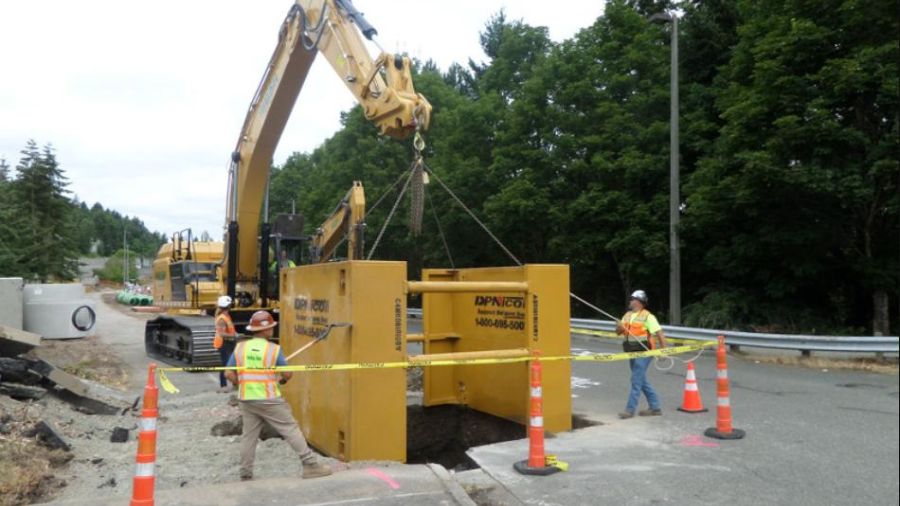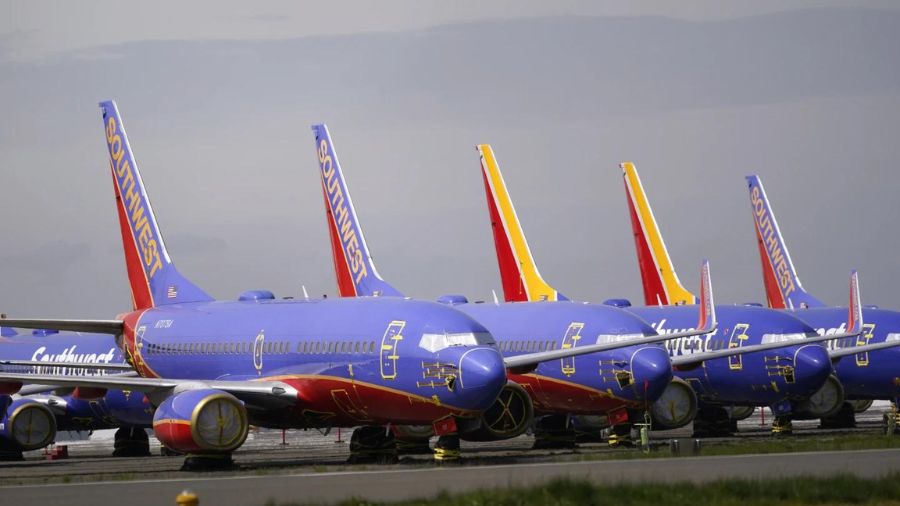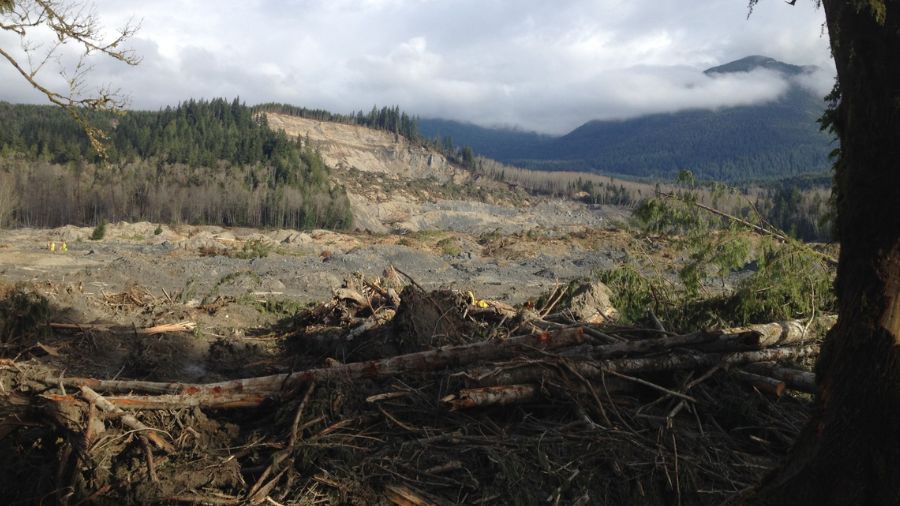SCOTUS limits EPA’s ability to regulate emissions in ‘stunning reversal of environmental laws’
Jun 30, 2022, 2:42 PM | Updated: 3:18 pm

Centralia Power Plant (Wikimedia Commons)
(Wikimedia Commons)
The U.S. Supreme Court (SCOTUS) has ruled on a 6-3 margin that Congress, in drafting federal environmental policy, did not authorize the Environmental Protection Agency (EPA) to regulate coal and natural gas plants in order to decrease their carbon emissions.
Gov. Inslee addressed the decision Thursday, saying the federal government will have a difficult time crafting policy to mitigate climate change after the decision.
West Virginia v. EPA stems from the state’s challenge to the EPA’s ability to regulate carbon emissions at existing coal and natural gas plants under the Clean Power Plan, a 2015 Obama-era policy.
The EPA, via the Clean Power Plan, cited a section of the Clean Air Act, Section 111, which authorizes the federal agency to regulate emissions and pollutants from existing sources.
The Clean Power Plan sought to control emissions with a three-pronged system, two of which involved “generation shifting,” a move in electricity production towards renewable energy. Broadly, the Court, in a majority opinion authored by Chief Justice John Roberts, ruled that forced transition into renewables strays too far from the original intent of the Clean Air Act.
In summarizing the Court’s majority opinion, Sen. Reuven Carlyle said Thursday that “[Congress must now] pass a bill that is explicit on every single technical element,” referencing Roberts’ analysis that, broadly, generational shifting was not defined well enough to constitute pollution regulation from existing sources under Section 111.
The relevant section of Roberts’ opinion can be found below.
Prior to 2015, EPA had always set Section 111 emissions limits based on the application of measures that would reduce pollution by causing the regulated source to operate more cleanly—never by looking to a ‘system’ that would reduce pollution simply by ‘shifting’ polluting activity ‘from dirtier to cleaner sources,’ the Court’s opinion reads.
But in that regulation, EPA set the emissions limit — the ‘cap’ — based on the use of ‘technologies [that could be] installed and operational on a nationwide basis’ in the relevant timeframe. By contrast, and by design, there are no particular controls a coal plant operator can install and operate to attain the emissions limits established by the Clean Power Plan.
Indeed, the Agency nodded to the novelty of its approach when it explained that it was pursuing a ‘broader, forward-thinking approach to the design’ of Section 111 regulations that would “improve the overall power system,” rather than the emissions performance of individual sources, by forcing a shift throughout the power grid from one type of energy source to another. This view of EPA’s authority was not only unprecedented; it also effected a ‘fundamental revision of the statute, changing it from [one sort of] scheme of . . . regulation’ into an entirely different kind.
Jackson sworn in, becomes 1st Black woman on Supreme Court
In a minority opinion, dissenting justices point to the idea that “Market forces alone caused the power industry to meet the Plan’s nationwide emissions target—through exactly the kinds of generation shifting the Plan contemplated.” The Biden administration had looked to further reduce carbon emissions, but the Supreme Court’s decision preemptively limits the EPA’s ability to act on those carbon reduction goals.
The minority makes the point that Congress delegated to the EPA to identify the best system to reduce carbon emissions, and the Supreme Court’s ruling is more “an advisory vote” than anything else.
The relevant section of the minority opinion can be found below.
The Court’s docket is discretionary, and because no one is now subject to the Clean Power Plan’s terms, there was no reason to reach out to decide this case. The Court today issues what is really an advisory opinion on the proper scope of the new rule EPA is considering … This Court could not wait—even to see what the new rule says—to constrain EPA’s efforts to address climate change,” the minority opinion reads.
The limits the majority now puts on EPA’s authority fly in the face of the statute Congress wrote.
The majority says it is simply “not plausible” that Congress enabled EPA to regulate power plants’ emissions through generation shifting. But that is just what Congress did when it broadly authorized EPA in Section 111 to select the “best system of emission reduction” for power plants. The “best system” full stop — no ifs, ands, or buts of any kind relevant here.
In a press conference Thursday, Gov. Jay Inslee described the SCOTUS decision as a “stunning reversal of environmental laws.”
“This morning, the U.S. Supreme Court took a wrecking ball to the ability of the federal government to restrain pollution … to Americans, including Washingtonians … from coal-fired plants.”
“The good news on this is that our efforts to transition off of coal and our Centralia plant will not be affected … but we have to understand that now the federal government is going to have a much, much more difficult role in trying to find some way to restrain climate change,” Inslee continued.












